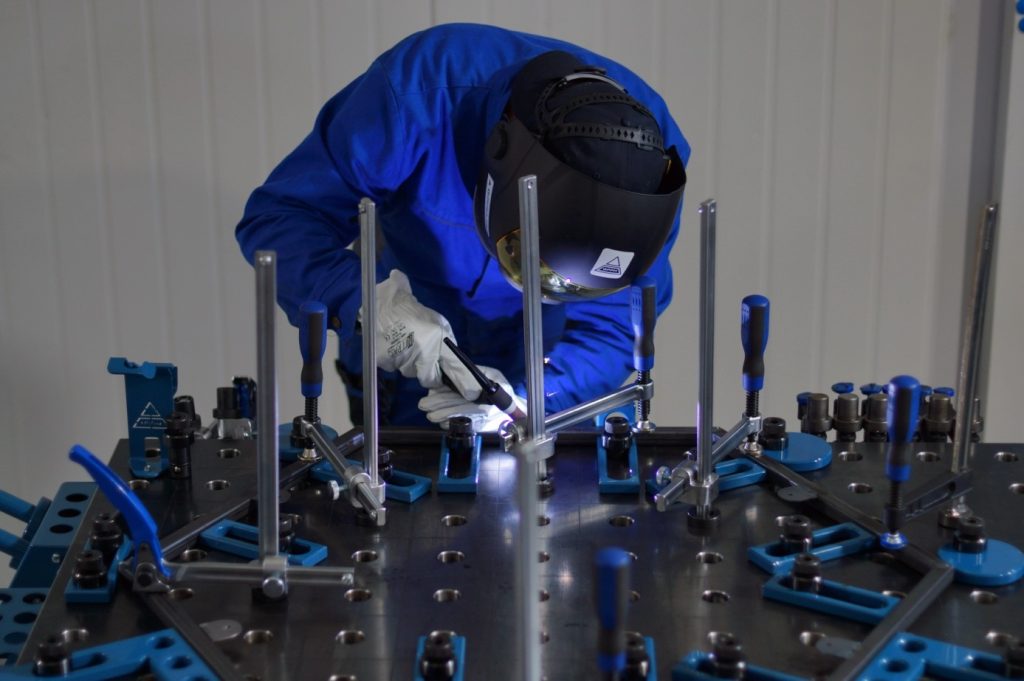Introduction to welding on welding tables: basics and techniques
Today's welding industry is increasingly turning to modern solutions that not only increase productivity but also improve the quality of the work performed. One such solution is the use of welding tables that provide stability and precision. Not only does a welding table enable comfortable and safe working, but it also has a significant impact on the accuracy and efficiency of welding by enabling precise positioning and clamping of materials. In this article, we take a closer look at the basics of welding on welding tables, covering the essential tools, materials and techniques that contribute to optimising the welding process.

Introduction to welding on welding tables
Welding on a welding table is based on the use of a specialised surface designed to support a variety of welding tasks. These tables offer integrated solutions that enable precise positioning and easy clamping of components, which significantly affects the final quality of the product. Thanks to these innovative solutions, the welding process becomes more precise, resulting in better durability and aesthetics of the completed joints. Furthermore, the ergonomic and stable configuration of the welding table, increases welder safety and overall productivity in the workshop, minimising the risk of errors and unwanted accidents.
Basic tools and materials
To start welding on a welding table, certain tools and materials are required. These include welding machines (such as MIG, TIG or electrode welders), protective equipment (such as visors and welding gloves) and consumables (electrodes, filler). The choice of tools and materials depends on the specific welding technique and the type of metal to be welded. GPPH welding tables are renowned for their durability and precision, making them ideal for a variety of welding applications.

Basic welding techniques
Several basic welding techniques are commonly used on welding tables:
- Graft welding: Used to temporarily hold components together before the final welds are completed.
- Butt-welding: Consists of joining two pieces of metal along their edges in a single plane.
- Finish welding: Creates a triangular cross-section between two pieces of metal joined at right angles.
Every technique requires precise control over heat input, welding speed and electrode position to produce strong and consistent welds. Welding tables provide the stability and adjustability needed to maintain these parameters, ensuring weld quality and reducing the likelihood of defects.

Summary
Welding on welding tables is the cornerstone of modern welding practices, offering increased precision, safety and productivity. By understanding the basics of welding using tools, materials and techniques, welders can optimise their work and achieve excellent results. Investing in high quality welding tables, such as those offered by GPPH, ensures durability and reliability in demanding industrial environments. Visit the GPPH website to explore the range of quality welding tables on offer and find out how they can enhance your welding capabilities.

